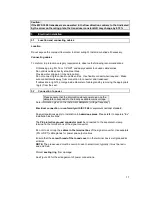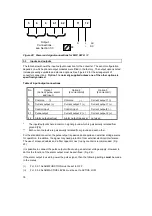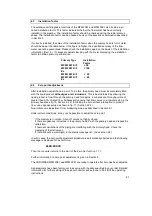
8
2.
Installation
2.1
General Principles
The MFS 2000 and MFS 3000 CORIMASS mass flowmeters are capable of providing high
accuracy and excellent repeatability. The narrow band pass digital filtering, the dual parallel
tubes of the P-Series and the tuned reference platform of the E-Series provide exceptional
immunity to external vibratory disturbances from process equipment in the area. Furthermore,
the power of the CORIMASS with its dual driver design permits unsurpassed performance on
certain types of slurries and on liquids with gas bubbles. Both designs are self-draining when
installed vertically.*
As with all Coriolis mass flowmeters, the CORIMASS is an active device with its own energy
source. The MFS 2000 mass flow sensor should be mounted into and by a rigid supporting
piping system to avoid reflected resonant energy from adjacent piping and mounting structures
in order to take advantage of the high degree of precision built into the instrument (fig. 5). A
possible exception is mentioned in Section 2.2.2.
Fig. 5 Basic installation requirement
MFS 2000: rigid, stress free supporting of the transducer
The MFS 3000 transducer should be mounted by using two metallic clamps (supplied with the
flowmeter), which are secured to a rigid mounting surface, as shown. For optimum
performance these clamps should be positioned near the outboard ends of the transducer
support tubes. They should also be well aligned to prevent undue stress on the MFS 3000
transducer housing when the clamps are secured. Adjacent piping should be rigidly supported
and aligned with the transducer to avoid excess loading on the transducer process
connections(See Fig. 6). For connection to tubing, process tubing should also be secured at
appropriate locations (indicated by arrows in Fig. 6) to minimize vibration.
* Note: 1.5E requires aproximately 7
°
anti-clockwise rotation from vertical.























